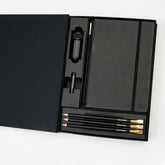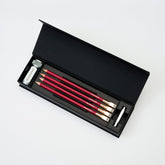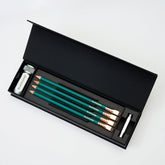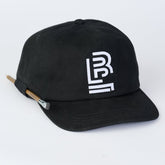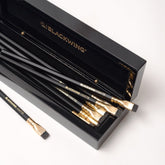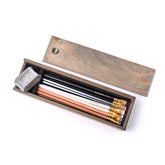Moving to a Different Beat - Coffeehouses and the Beat Generation
Coffeehouses and the Beat Generation
In 1952, John Clellon Holmes published an article in the New York Times Magazine titled, “This is the Beat Generation.” The story introduced the mainstream public to the philosophies and lifestyle of a new generation of young people in pursuit of rugged individuality. As the article states, the term “beat” was first thrown around by the author Jack Kerouac. The word was used to describe a sense of weariness and the feeling of being manipulated that permeated the minds of the youth coming of age in a post-war America. On the other hand, it also represented the dynamic nature of this generation, in constant motion, moving to its own unique beat.
The roots of the “Beat Generation” began in the 1940s when novelist Jack Kerouac and poet Allen Ginsberg, then students at Columbia University, met the writer William S. Burroughs. The core tenants of this new literary movement revolved around the rejection of modernity in response to a changing post-war society. Beat literature centered itself around exploration in all of its forms from psychedelics to spirituality to deep examinations of the human condition. These concepts inspired other writers and artists to join the growing collective and also inspired a larger counterculture of like-minded youths called the “Beatniks” who subscribed to this bohemian lifestyle.

Jack Kerouac, Allen Ginsberg, and other Beat writers.
The early epicenters for the Beat Generation were the Greenwich Village in New York City and North Beach in San Francisco. During the 1950s, aspiring musicians, writers, artists, and poets flocked to New York City’s Greenwich Village in search of community, the chance to be discovered, and a lower cost living. This transformed the area into a creative cauldron that became the heart of the Folk Revival and the Beat Generation.
During the day, beat poets held open forums to discuss their ideas and critiques of society at Washington Square Park. While in the evenings, coffeehouses like Cafe Wha?, The Bitter End, and San Remo Cafe hosted performances and readings from Allen Ginsberg and Jack Kerouac with other notable Greenwich Village residents like folk musician Bob Dylan and abstract artist Jackson Pollock in attendance.

On the west coast, San Francisco’s North Beach emerged as another hotspot for Beat Generation literature with the opening of City Lights Bookstore. Founded in 1953 by beat poet Lawrence Ferlinghetti, City Lights was both an independent publisher and reseller. Ferlinghetti gained notoriety for circulating the “City Lights Pocket Poet Series,” a collection of avant-garde poetry that featured the first publishing of Allen Ginsberg’s controversial and seminal work, Howl. City Lights Bookstore and Ferlinghetti’s influence brought many from the Greenwich Village over to San Francisco solidifying it as a second home for the burgeoning Beat movement.
Just down the street from City Lights, Caffe Trieste and Vesuvio Cafe became popular haunts for wandering Beatniks. Opened in 1956, Caffe Trieste is regarded as California’s first coffeehouse. Founded by an Italian immigrant, Giovanni Giotta, Caffe Trieste introduced espresso to the west coast and became a place of refuge for Italians dreaming of cafes back home. This sense of community and support transformed the cafe into a popular destination for the Beat Generation to come write, gather, and discuss creativity.

Beatniks hanging at a coffeehouse in North Beach, SF
Throughout the 1950s and 60s, coffeehouses became the center of creative movements all across America. From the Folk Revival to the Beat Generation, writers, artists, musicians, and poets gathered in these unique spaces to exchange ideas, create, and perform. The creative culture and traditions brewed in these coffeehouses from New York’s Greenwich Village to San Francisco’s North Beach continue to live on in coffeehouses all across America.




